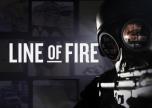« Line of Fire
Ep 2 - Collateral Damage
Description
Episode Two: Collateral Damage
To shoot or not to shoot? As the 1980’s dawn in Collateral Damage, the second episode of the three part documentary series Line of Fire, the Armed Offenders Squad (AOS) is under public scrutiny like never before. Accused of being trigger-happy after several high-profile fatal shootings, squad members feel the pressure of making life-and-death decisions in a split second. In a decade pockmarked with violent incidents, the worst would come at the beginning of the 1990’s, in a quiet seaside town called Aramoana.
Breakdown
In the 1980s, despite all the incidents that would end without a fatality, it would be those in which the AOS took a life that would shape the squads and draw the most criticism. Early on, there is one that rocked even the squad members themselves – the fatal shooting of Paul Chase in 1983.
After that fatal incident, ‘to shoot or not to shoot’ would be something members would consider and re-consider, time and time again.
"If you make a mistake, then you’re the one who has to face the consequences."
AOS squad member
After Paul Chase’s death the media went ballistic – a man killed for wielding an exercise bar? The squads became hyper-vigilant – every move they made would be under enormous scrutiny.
A very public call-out in Queen Street where members were hesitant to take action – even though the offender was clearly putting the lives of others at risk – changed everything. Lessons were learnt – after all, it was public mayhem where anything could have happened. By luck, it was only a Police dog that got the full impact of a gun shot.
Once again, the question is debated: who holds the responsibility? Is the individual squad member simply following orders, or being asked to make life and death decisions in a split second?
Key interviewees share some of their scariest ‘war stories’ – the moments in which they were faced with the terrible decision of whether to take a life or not. Wives and partners tell of their fear and apprehension, as their partners disappear on operations for days on end.
Smaller rural AOS squads were forming all over the country and while their beat was less populous, their work was by no means less dangerous. The 1980s also saw the rise of another tactical response unit – the Anti-Terrorist Squad (ATS) – with members drawn from the Armed Offenders Squad.
The first official deployment of the ATS would take place in 1990, at a quiet seaside community near Dunedin. No previous training prepared squad members for the carnage that would unfold in Aramoana.
"It was a sniper’s paradise"
ATS squad member on Aramoana



